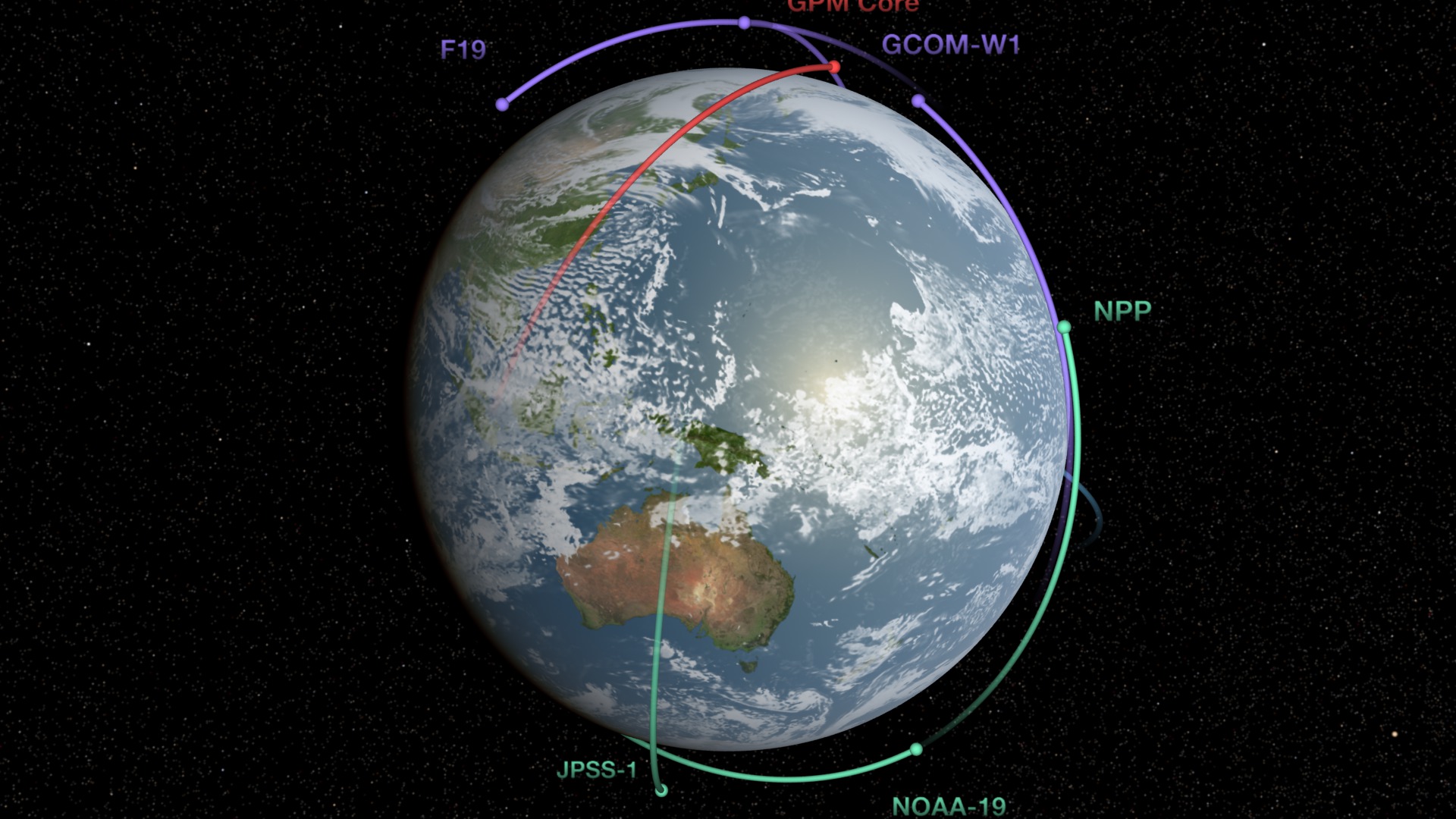Rainspotting
How do you see all the rain in the world nearly at once? NASA and the Japan Aerospace Exploration Agency (JAXA) will soon use a constellation of nine satellites to make just such frequent and widespread rainfall readings. The satellites of the Global Precipitation Measurement (GPM) mission will cover almost every patch of Earth and capture the volume of rain falling over the world every three hours. The centerpiece of the mission, the GPM Core satellite, will launch in 2014. The GPM Core will calibrate and unify all the mission's observations to create a new worldwide rainfall data set eight times each day. The animation shows how the nine GPM satellites will surround Earth in order to gather the most up-to-date precipitation data possible.

A swarm of satellites will soon keep constant watch over the world's precipitation.
Each satellite has its own mission goal but carries a radiometer that measures rainfall by detecting the electromagnetic energy it radiates.

The GPM Core spacecraft undergoes g-force testing in a NASA centrifuge in early 2011.

The GPM Core's dual-frequency precipitation radar, built by JAXA, will detect cloud structure and 3D distribution of rainfall.

Built at NASA's Goddard Space Flight Center, the GPM Core is scheduled to launch from Tanegashima Space Center in Japan in early 2014.

GPM will continue the 3D rain observations of the NASA-JAXA Tropical Rainfall Measuring Mission, such as this swath of Hurricane Alex in 2010.
Credits
Please give credit for this item to:
NASA's Goddard Space Flight Center
Dual frequency radar photo courtesy of JAXA
-
Animators
- Trent L. Schindler (USRA)
- Ernie Wright (USRA)
- Greg Shirah (NASA/GSFC)
-
Producer
- Ryan Fitzgibbons (USRA)
-
Scientists
- Arthur Hou (NASA/GSFC)
- Dalia B Kirschbaum (NASA/GSFC)
-
Writer
- Ellen T. Gray (ADNET Systems, Inc.)
Release date
This page was originally published on Thursday, November 1, 2012.
This page was last updated on Wednesday, May 3, 2023 at 1:52 PM EDT.
